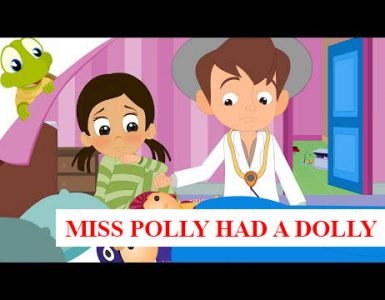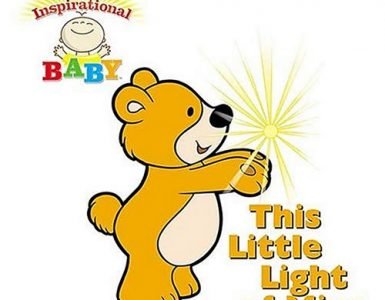The Cultural Significance of a Timeless Nursery Rhyme
The nursery rhyme Baa Baa Black Sheep has permeated cultures across the world, transcending its simplistic façade to reveal layers of meaning and history. Originating in the 18th-century England, it is believed to reflect societal norms and economic conditions of the time. While the melody and lyrics are simple enough for children to grasp, the imagery invokes much deeper themes of social justice and resource distribution—embodying an age-old question: Who truly benefits from labor? The seemingly innocuous query posed to the black sheep about the wool it produces can be seen as a critique of social stratification and class disparities; it indirectly comments on the exploitation faced by many workers in various trades, not just in agriculture but in society at large. Moreover, this rhyme often coincides with childhood memories, lulling little ones into sleep while simultaneously encoding a complex historical narrative within euphonic lines .
Baa Baa Black Sheep Lyrics
Baa, baa, black sheep, have you any wool?
Yes ma’am, yes ma’am, three bags full.
One for the master, one for the dame,
And one for the little boy who lives down the lane.
Baa, baa, black sheep, have you any wool?
Yes ma’am, yes ma’am, three bags full.
Baa, Baa, blue sheep, have you any wool?
Yes ma’am, yes ma’am, three bags full.
One for the grandma, one for the grandpa,
And one for the baby who lives down the street.
Baa, Baa, blue sheep, have you any wool?
Yes ma’am, yes ma’am, three bags full.
Baa, Baa, pink sheep, have you any wool?
Yes ma’am, yes ma’am, three needles full.
One for the kitten, one for the puppy,
And one for the bunny to knit some blankets.
Baa, Baa, pink sheep, have you any wool?
Yes ma’am, yes ma’am, three needles full.
Baa, Baa, white sheep, have you any wool?
Yes ma’am, yes ma’am, three needles full.
One to mend a sweater, one to mend a hat,
And one for the little girl with holes in her sock.
Baa, Baa, white sheep, have you any wool?
Yes ma’am, yes ma’am, three needles full.
More: Top 10 most food song for kids
Historical Context and Interpretation Baa Baa Black Sheep
Drilling down into the origins, research indicates that the reputation of the black sheep, often viewed with disdain in agrarian societies for being different or less productive, serves as a powerful metaphor in this tale. In essence, the black sheep operates as an outlier—an emblem of individuality facing societal pressures. Much like Rudyard Kipling’s reflective writing in Baa Baa, Black Sheep and The Gardener, where the author elaborates on his own formative experiences away from home, this nursery rhyme urges listeners to ponder feelings of isolation versus belonging . The ambiguity of whether the black sheep receives fair compensation for its wool reflects essential discussions about equity and justice, perhaps paralleling modern-day dilemmas in labor rights and ethical consumption.
A Gateway to Exploration Through Music and Media
Baa Baa Black Sheep Beyond the lyrical content, the enduring allure of Baa Baa Black Sheep extends to various forms of expression—from songs available on platforms such as Spotify, highlighting their enduring popularity in today’s music scene , to adaptations in television narratives, creating a rich tapestry of interpretations that keep the story relevant . Each artistic rendition invites audiences to explore varying frameworks of understanding what it means to be different, often celebrating diversity over conformity. In educational realms, initiatives like BBC Teach present this rhymed folklore as a gateway for children to engage with moral lessons about sharing, empathy, and community, foundational blocks that shape ethics from a young age .
Implications of Our Historical Narratives
The historical permanence of the image of the black sheep reflects broader human dynamics: change, resistance, and embracing uniqueness. Should we consider this rhyme in light of contemporary dialogues on acceptance and inclusivity, we might find poignant parallels in advocating for marginalized voices—those who have historically been “othered” by society. For young children engaging with Baa Baa Black Sheep, there lies an opportunity to cultivate a consciousness around themes of fairness: Why should one animal bear the burden of providing something valuable when others do not contribute equally? This question resonates deeply, serving as a prelude to fostering critical thinking and empathetic reasoning in the youth of today, eventually shaping the leaders of tomorrow.
In summary, Baa Baa Black Sheep encapsulates far more than a simple children’s song; it narratively interweaves the fabric of societal values and does so through a lens that is humorous and engaging, yet profoundly introspective. As we recite its lines or sing along with the foot-tapping melody, we are not just participating in a cultural tradition but are also inheriting a rich dialogue that urges us to reflect on our roles within the community—encouraging us to act with compassion and to understand that every voice, no matter how small, matters.
Cocomelon Baa Baa Black sheep – Nursery Rhymes and Kids songs
Cocomelon Baa Baa Black Sheep Song is a Nursery Rhymes Lyrics for children. This is one of the songs about colorful sheep, produced by Cocomelon. Include songs and lyrics for children.
Source: Video Share Youtube For channel ABCkidsTV












